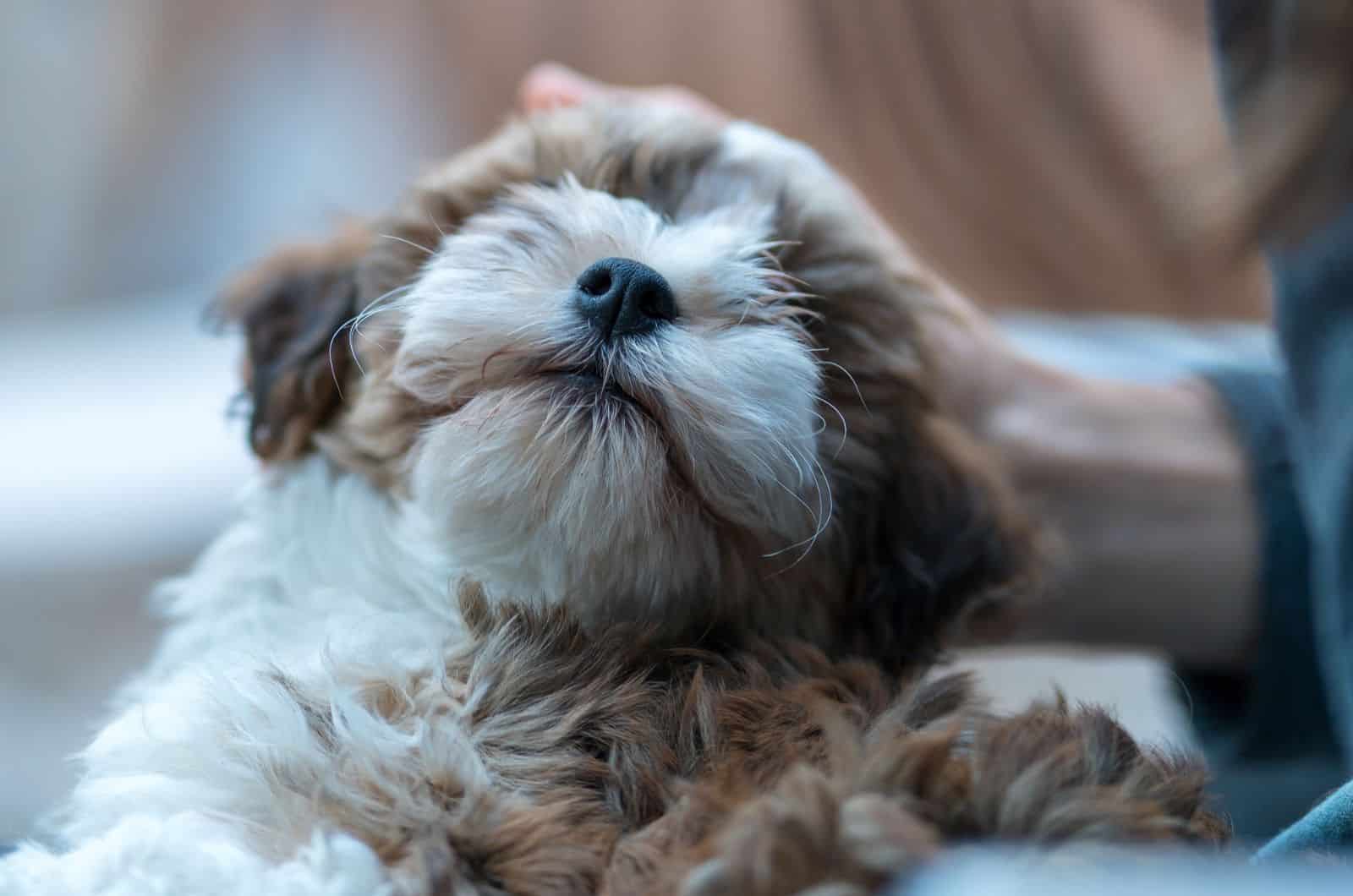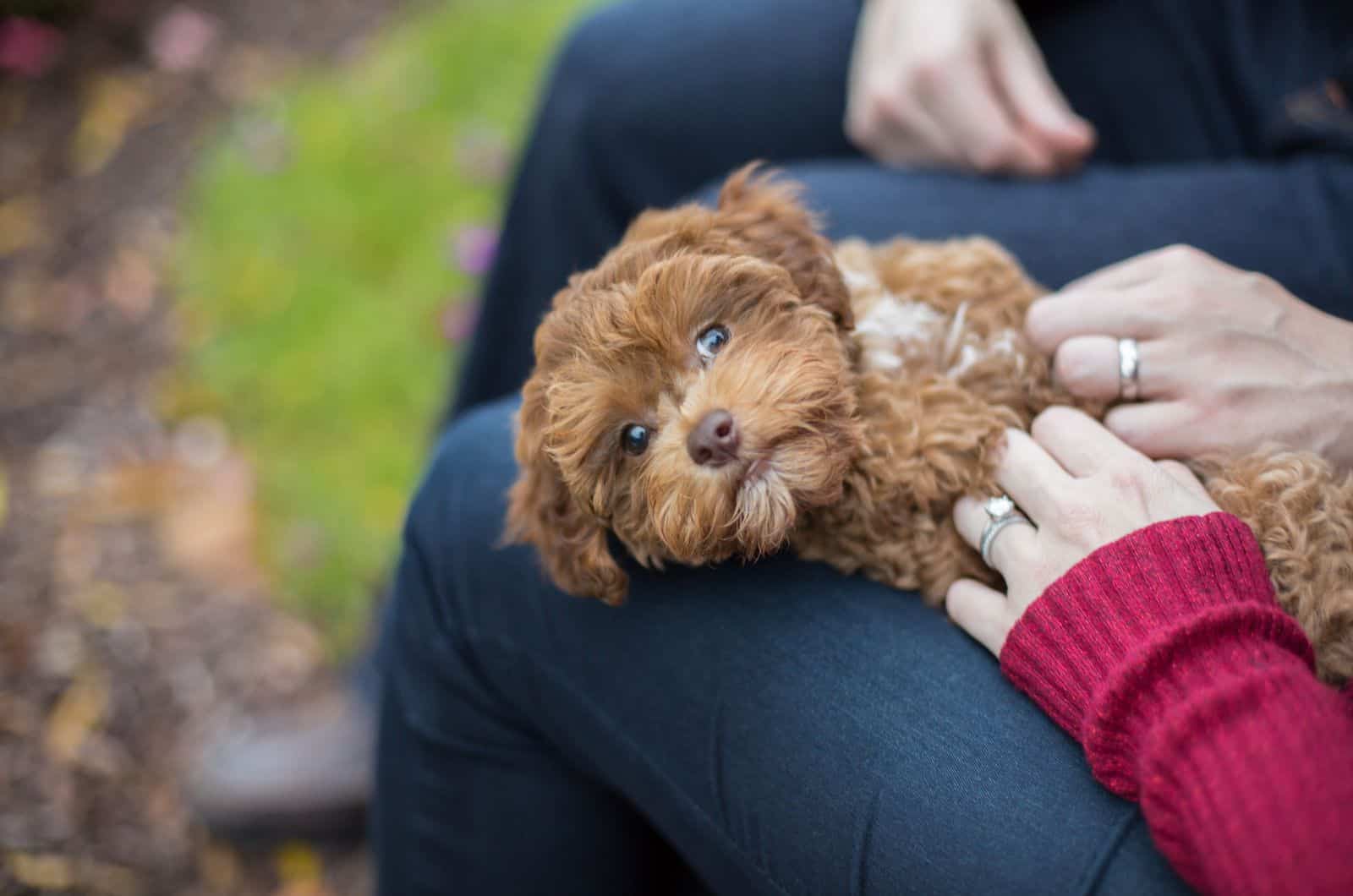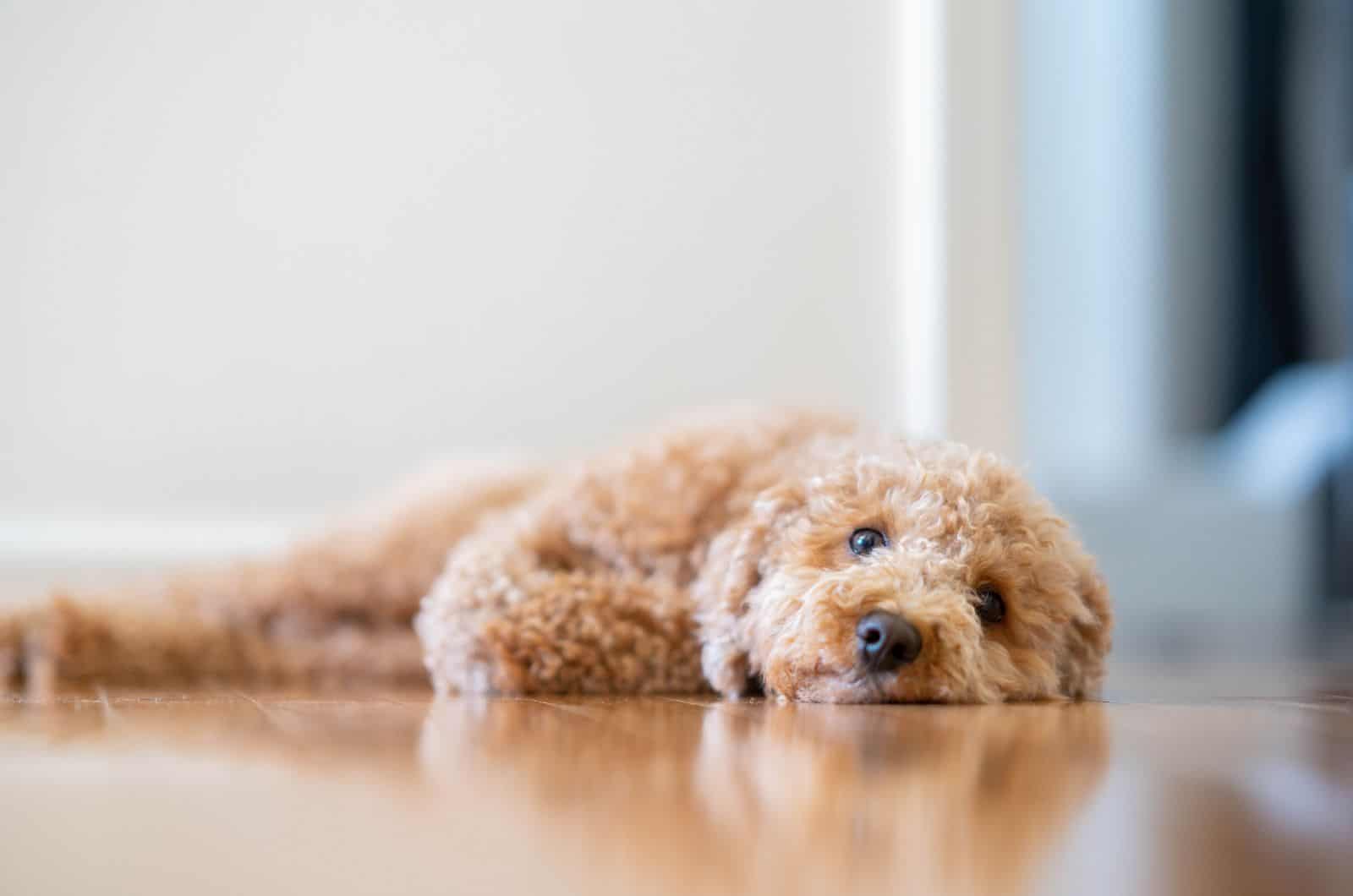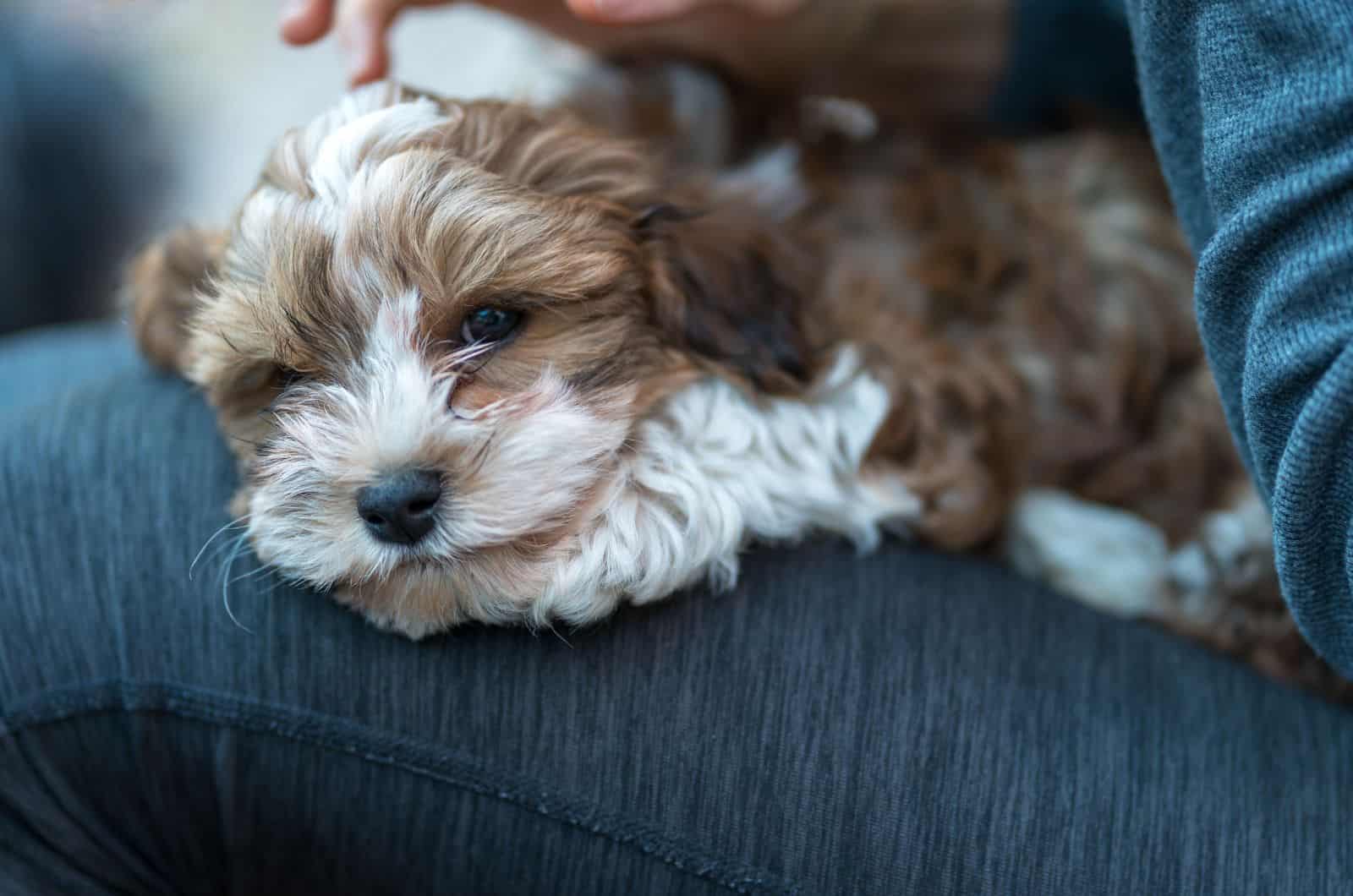Havapoos are one of the sweetest, fluffiest dog breeds that you can possibly find. This Havanese-Poodle mix practically looks like puppies throughout its entire life, but how big can they actually get?
In this article, we bring you a full, comprehensible Havapoo growth chart, along with a bunch of other information that will explain everything there is to know about the various Havapoo sizes.
We will discuss different types of Havapoo, their predicted height and weight, as well as all the inside and outside elements that impact their growth.
So what exactly is a Havapoo?
Havapoos are a crossbreed between Poodles and Havanese dogs (who are the official dogs of Cuba, by the way), and they are sometimes known by other names, such as Poovanese, Havadoodles, and Havanoodles. When it comes to their appearance, they are fairly similar to some other small breeds like the Bichon Frise, Cavapoos, and the Maltese.
Being a hybrid breed, they are not officially recognized by any kennel clubs.
If you are already a Havapoo owner, or if you’re looking to get yourself a Havapoo puppy in the near future, then this should be on your reading list. With our Havapoo growth chart, you will know what to expect from your pup as it develops, and there will be no unpleasant surprises.
Havapoo Growth Chart
| Age | Toy Havapoo Weight | Mini Havapoo Weight |
|---|---|---|
| 4 weeks | under 2 pounds | under 2 pounds |
| 8 weeks | 1.5 to 2.5 pounds | 1.5 to 2.5 pounds |
| 3 months | 5 to 11 pounds | 6 to 12 pounds |
| 6 months | 6 to 13 pounds | 8 to 15 pounds |
| 8 months | 7 to 15 pounds | 10 to 25 pounds |
| 12+ months | 7 to 15 pounds | 15 to 45 pounds |
How Big Will My Havapoo Get?
As you can see, there are various points in that growth chart that we need to get into. First of all, let’s answer the question that was probably the first one that popped into your mind: how big will my Havapoo get?
At their biggest, Havapoos can grow up to be around 15 inches (38.1 cm) in height and 45 pounds (20.4 kg) in weight, which is just about the size of a mini Poodle, and a lot larger than standard purebred Havanese dogs.
However, this is just one size variation of the Havapoo, i.e., the miniature one. The toy ones are significantly smaller and closer to their Havanese parents in build. These are even more suited to being lapdogs than the other kind.
Let’s talk a bit more about these different types of Havapoo and how they came about.
Different Types of Havapoo

The Havanese are a textbook example of a small dog. Havanese puppies weigh no more than 6 to 8 pounds, and even at the peak of their adulthood, they don’t grow much larger than that. They grow up to be 11.5 inches (29.2 cm) tall at the withers and weigh about 13 pounds (5.9 kg) at the most.
Since they are small breed dogs, they can only be bred with the smaller variation of Poodles.
So, when they breed with Miniature Poodles, the result is the Mini Havapoo, and when they breed with Toy Poodles, the result is the Toy Havapoo. Simple as that.
While they are often used for producing mixed breeds such as the Labradoodle, Standard Poodles cannot be used for breeding Havapoos. They are around 22 inches (55.9 cm) tall and weigh around 60 pounds if they’re females and even up to 70 if they’re males. That is simply too much to handle for a Havanese, so breeders avoid that mix.
Toy Havapoo
Toy Havapoos usually top out at 12 inches (30.5 cm) in height and about 7-15 pounds (3.2-6.8 kg) in weight, which is interesting because it means that they can sometimes grow up to be bigger than both of their parents.
As we mentioned, Havanese can only be as tall as 11.5 inches, and toy Poodles only up to 10 inches.
Mini Havapoo
The mini version of Havapoos is born when a mini Poodle is mixed with a Havanese. They range from 12 to 15 inches (30.5 to 38.1 cm), which means they are about the same height as their Poodle parents.
Combined with the fact that they inherit the trademark curly, hypoallergenic Poodle coat, it’s no wonder they sometimes get mistaken for their parent breed. There is of course the difference in color, and also weight.
While mini Poodles usually weigh no more than 20 pounds (9 kg), mini Havapoos can go up to 45 pounds (20.4 kg).
When Will My Havapoo Stop Growing?

The general rule of thumb among dog breeds is that the smaller they are, the sooner they will finish their development process.
However, Havapoos usually take a little longer than some other small dog breeds, and they normally complete their growth and reach full physical adulthood at 12 months of age.
After this point in their lifespan, they will stop growing taller, but they can still add some weight. That, of course, is dependent on their diet and exercise levels.
But a lot of things happen in that first year of their lives. Even though they don’t end up being big, their growth process is still fascinating. We’ve decided to split it into several shorter stages and describe what happens to Havapoo puppies in each one.
Birth To 2 Months
When they’re just born, Havapoo puppies are no bigger than a bag of rice. During this earliest period of their life, they weigh between 1.5 and 2.5 pounds (0.7 to 1.1 kg), and they don’t do much more than lay around and drink milk.
At the very beginning of their life, they are highly attached to their mother and can develop separation anxiety if they are taken away from her too early.
Towards the end of the first month, their eyes start opening up and their ears perk up. They begin moving around a bit more and slowly start the process of socialization.
2 Months To 6 Months
Before the start of this period, puppies had already started exploring their surroundings by themselves, and they’ve been weaned off their mother’s milk.
It’s at this point that you can choose to feed your pup solid kibble or perhaps raw food. If you choose to go the raw diet route, you will need to know how much raw food you should feed your puppy.
This diet change and increase in activity result in a higher growth rate, and an increase in puppy weight. They go from under 6 pounds (2.7 kg) up to 12 pounds (5.4 kg) towards the end of this stage (if they are the mini variant), so they essentially double their entire weight in a 4-month span.
6 Months To 1 Year
The second six months of their lives are an important stage in their anatomical development. Their bodies start to fully flesh out and shape into something closely resembling their adult form.
The same is true for their mental development, as they become much more intelligent and independent, and their need for attention changes considerably.
The growth rate isn’t as high as it was up to this point, so they only gain a few pounds here and there, but by their first birthday they should be fully grown.
After 1 Year Of Age
Once Havapoos have blown the candles on their first-ever birthday cake, they will most likely not experience any further growth in size. What you see now is what you get.
There are, of course, cases of dogs not developing fully or not reaching their desired weight.
If you think your puppy is underweight or struggling to grow into the required adult weight, it would be best for you to learn as much as you can about the process of weight gain in dogs, what causes them to be underweight, and how you can help them.
Dogs that successfully manage to reach their proper adult weight can still continue to add pounds. So you need to keep a close eye on it and maintain it within a healthy range. You can do this by carefully controlling their diet and providing them with enough physical stimulation.
What Affects Havapoo Size?

The range of sizes that Havapoos can reach in their adulthood is not as wide as with some other dogs. That being said, they can still have variations, depending on several different influences.
The three major factors that determine how big a Havapoo will be are the size of its parents, the quality of its diet, and the amount of exercise they get.
Parent Size
Both Poodles and Havanese are generally considered small dogs, but that doesn’t mean they’re all the same size. Poodles in particular can vary a lot from one individual dog to another, hence why there is a whole slew of different doodle mixes.
And since size is mostly a hereditary thing, their Havapoo puppies will naturally fall somewhere in the middle when it comes to their height and weight. Other than some exceptions, of course.
With that in mind, you can see how important it is to know how big the Havapoo’s parents are when you are trying to predict its growth and adult size. If you’re not in the position to know the exact sizes of your particular Havapoo’s parents, then there are alternatives.
Just as we did with the Havapoo growth chart, we’ve created special growth charts for both its parent breeds, the Havanese and the Poodle. This can help point you in the right direction when it comes to figuring out how big your Havapoo will get.
Havanese Size Chart
| Age | 3 months | 6 months | 1 year | adult |
| Height | 4-6 inches | 8-11.5 inches | 8-11.5 inches | 8-11.5 inches |
| Weight | 3-4 pounds | 6-8 pounds | 7-13 pounds | 7-13 pounds |
Poodle Size Chart
Since Havapoos can be bred from both Toy Poodles and Miniature Poodles, we’ve made separate size charts for both of those types.
Toy Poodle Size Chart
| Age | 3 months | 6 months | 1 year | adult |
| Height | 8 inches | 10 inches | 10 inches | 10 inches |
| Weight | 3-5 pounds | 6-10 pounds | 9-14 pounds | 10-15 pounds |
Miniature Poodle Size Chart
| Age | 3 months | 6 months | 1 year | adult |
| Height | 5-10 inches | 9-14 inches | 9-15 inches | 10-15 inches |
| Weight | 2-5 pounds | 5-8 pounds | 7-11 pounds | 7-12 pounds |
Nutrition
Perhaps the most apparent factor that impacts the growth of a dog — or any living creature, for that matter — is the stuff they eat.
Food is key, and in order to maintain your Havapoo’s height and weight healthy, you need to put them on a balanced diet consisting of all the necessary nutrients. Whether it’s kibble, raw food, or home-cooked meals, you need to make sure it has everything your pooch requires.
Proteins, carbs, and vitamins are just some of the ingredients your Havapoo needs to grow and develop properly. Additionally, they might occasionally need specialized supplements, but that is something you should consult your vet about.
Other than providing specialized suggestions, they can also give you advice on how to plan a long-term diet for your Havapoo.
They will also know more about any potential allergies or food intolerances, so they will be able to form a much more informed opinion and give you some great advice about choosing the right kind of dog food.
Speaking in general terms, adult Havapoos need around 600 calories per day to be able to function properly and go about all of their activities. This should ideally be spread into at least two daily meals because their tiny little bodies can’t digest big quantities of food at once.
Physical Activity
Even though they are technically considered designer dogs, Havanoodles aren’t one of these types to just sit still in your arms while you parade around town.
Their cute little bodies are wells of energy and if they don’t expend enough of it, they might get restless and frustrated. Furthermore, insufficient physical activity can even lead to some more serious health issues.
That ties in closely with growth and weight, as well. If Havapoos get their exercise needs satisfied, their bones and muscles will develop the way they should and when they should.
Perhaps even more importantly, regular exercise will keep their weight in check and prevent them from becoming overweight or obese.
Does Neutering/Spaying Affect The Growth Of A Havapoo?
Neutering is the surgical process of removing a male dog’s testicles, usually to prevent them from producing unwanted offspring. Similarly, spaying is the practice of removing a female dog’s ovaries and/or uterus.
Spaying/neutering is a very talked-about topic in the world of dog owners, and it can sometimes get pretty controversial. If you’re not sure whether to neuter your dog or don’t know what the best time to do it is, there are certain signs you can look for.
The reason why we’re mentioning dog fixing is because it ties into the subject we are discussing in this article. Namely, there is a well-known myth that dogs who are spayed or neutered tend to become overweight.
That is not entirely true. If you get your Havapoo fixed, it won’t immediately start piling on the pounds, but it might require slightly more stimulation than before. Keeping its exercise schedule regular will be more than enough to keep its weight healthy.
Neutering/Spaying A Havapoo Too Early
However, if you spay or neuter your Havapoo while it’s too young, then it might encounter some development problems. You see, sex hormones often work in unison with growth hormones, especially during the early stages of a dog’s development.
If a Havadoodle is spayed or neutered during early puppyhood, for example, its body ceases to produce sex hormones and its development can be hindered. If you choose to sterilize your Havapoo, it’s important that you pick the right age.
There is no universal answer that suits every individual dog, but most experts agree that it should be done after they have reached puberty (between 4 and 9 months of age) if they are male, and before the first heat cycle (can be as early as around 5 months of age) if they are female.
It’s not a one-size-fits-all kind of thing, so you should absolutely have a conversation with your vet to determine the right moment for your beloved Havapoo.
Why Do I Need A Havapoo Growth Chart?

Keeping track of your Havapoo’s growth is essential to keeping it healthy. Making sure that its height and weight are within the required ranges goes a long way toward keeping your dog in optimal shape.
Not only will they be physically fitter, but they will also be less susceptible to other size-related medical conditions, such as obesity.
Obesity is a big problem, and it takes an extra toll on smaller dog breeds than it does on larger dogs. Their bodies simply aren’t built to carry around a lot of weight, so it puts extra pressure on their bones and joints, and occasionally their inner organs as well.
Mixed breeds often require additional attention because of their specific genetic make-up. It is a well-known fact that designer dogs often have a higher chance of developing various health problems, including stuff like hip dysplasia, patellar luxation, and cataracts.
But they can also be even more prone to weight gain than other dog breeds, so it’s important that you keep a close eye on their weight and height.
For that reason, having a Havapoo growth chart is really a no-brainer.
Read Next: The Best Havapoo Breeders You Can Find In The USA (2022)!
Conclusion
Whether you already own one of these little dogs, or you’re just looking to adopt a Havapoo puppy, making sure that its development stays on track will be one of your main concerns.
The first few months are crucial so it’s important that you get it right in that period. Aside from all the vet visits, health checks, potty training, and feeding issues, you can’t forget about your Havanoodle’s size.
If your puppy keeps growing properly, that’s usually a great sign that you’re doing everything right, so having a Havapoo growth chart like this one will be useful as a reference tool. Along with some of the other stuff we’ve talked about in this article, we’re confident it will be helpful to you in the process of raising your little Havapoo.
May you have a lot of nice cuddles!
Read Next: Havapoo vs Cavapoo – Cheerful Cuban or Cavalier Brit?













